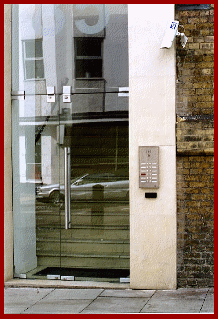| ||||||||||||||||||||||||||||||
Welcome to the | ||||||||||||||||||||||||||||||
 | ||||||||||||||||||||||||||||||
 | ||||||||||||||||||||||||||||||
So you want to know more about Digital, | ||||||||||||||||||||||||||||||
Setting up an analogue CCTV system using boring old bits of conventional equipment, used to be (and probably still is!) a fairly straightforward discipline for anyone with a reasonable working knowledge of the subject. Now Network / IP surveillance is quite rightly changing the way we do things, but not always in the right way, and more importantly, for the right reasons. The digital revolution does provide a much greater degree of flexibility when applying surveillance equipment to operations such as remote or automated monitoring, information exchange and the recording or processing of images. That said, for many operators currently looking to upgrade from analogue to digital, there is a very real risk that in their uncontained enthusiasm for embracing the new technology, the proverbial baby may well be exiting along with the bath water. The problem is that in the context of security, the lessons learnt over many decades of using conventional CCTV, are being completely disregarded as an inconvenient distraction which may restrict the rapid deployment of digital technology. One obvious example might be with the current issue of video recording. Now if a DVR or NVR is set up to record at maximum resolution, which hopefully will be in excess of that achievable using an analogue Super VHS machine, then the individual image files tend to be particularly large (this will obviously vary depending on the compression technique, certainly H.264 / MPEG-4 will produce much smaller files than M-JPEG for example). Now the problem comes in that in order to record at the highest quality, a compromise needs to be made either by reducing the number of images recorded each second, or the Hard Disc capacity needs to be significantly increased, with an obvious price penalty. In practice, many operators simply turn down the quality and record more images per second, which often means pictures barely any better than standard VHS. It's also quite common to find DVR's which are set to record only when motion is detected in the image, thus saving valuable disc space by omitting periods of 'inactivity'. The theory is fine, but in practice there is a clear opportunity for a legal challenge to the systems 'continued, constant and uninterrupted operation'. If you can't prove that the system was working perfectly at a precise moment in time, how can you prove that other suspects have not been missed by the motion detection function? Network considerations - is it all plain sailing? - continued >> | ||||||||||||||||||||||||||||||
 | ||||||||||||||||||||||||||||||
IMPORTANT: No material may be reproduced, copied or redistributed from this site, © doktorjon.co.uk 2004 - 2008 Homepage...:...Gateway...:...Technical Gateway....:....Quickfind Index....:....Equipment Directory | ||||||||||||||||||||||||||||||

